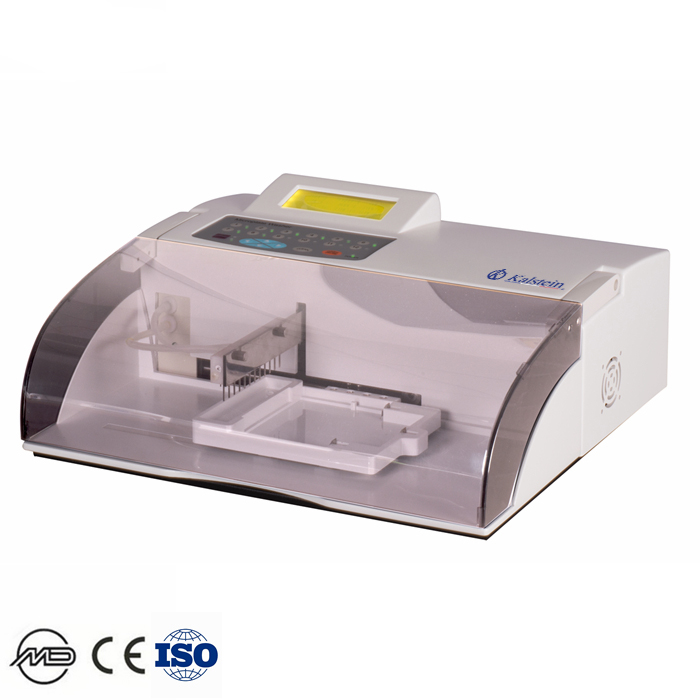The ELISA scrubber has been designed to perform the washing operations that are involved in the ELISA technique, so its proper functioning is critical to ensure that the ELISA technique works properly.
Washing is one of the steps that must be carried out when performing analyzes, using the ELISA technique. Special solutions are used for this purpose. Among the most used is the buffer phosphate solution or PBS. The phosphate buffered solution has a stability of 2 months, if kept at 4 ° C. It is estimated that between 1 and 3 liters of solution is required for washing a microplate. It is estimated that 300 μl of wash solution per cycle is used in each well. Washing is an operation that can be done manually, but if you have high demands and if you work with potentially contaminated substances, it is better to use an automated washing equipment. Among the washing processes, the following stand out:
- Aspiration from top to bottom: When the aspiration phase starts, the needles move vertically and aspiration starts immediately; they enter the liquid; the process continues until the needles reach the lower maximum position, very close to the bottom of the wells, at which point they stop to avoid sucking air that would necessarily flow on the inner side walls of the wells. This type of aspiration prevents drafts from drying the bound protein on the surface of the wells.
- Simultaneous aspiration and dispensing: In this type of washing the washing and suction systems work simultaneously, generating a controlled turbulence inside the well that removes unbound substances during the estimated reaction times.
- Aspiration from the bottom of the wells: In this system, the aspiration of the fluid contained in the wells is carried out by initially positioning the aspiration needles in a position very close to the bottom, initiating a suction cycle that is usually controlled by time. . This system can reach air suction if there are differences in the filling levels of the tanks.
What considerations should I take into account so that the ELISA washer operates correctly?
You need to have the following:
- A clean, dust-free environment.
- A stable work table. It is recommended that it be kept away from equipment that generates vibrations -centrifuges, agitators-, that has an adequate size to allow locating, next to the ELISA washer, the additional equipment required to perform the technique in question: analyzer, incubator, dispenser and computer with peripherals.
- An electrical outlet with ground pole in good condition, connected to a connection that complies with the standards and electrical standards implemented in the country or laboratory. In American countries voltages of 110 V and frequencies of 60 Hz are generally used.
Basic maintenance (Daily Frequency)
- Check the volume dispensed.
- Check the uniformity of the filling.
- Check the efficiency of the suction subsystem.
- Confirm the cleaning of the supply and extraction needles.
- Clean the scrubber with distilled water after using it, to remove any traces of salt in the ducts of the supply and extraction subsystems. The needles can be kept submerged in distilled water.
- Verify the cleanliness of the body of the washer. If necessary, clean the exterior surfaces with a piece of dampened cloth, using a mild detergent.
Preventive maintenance (Quarterly frequency)
- Disassemble and clean the conduits and connectors. Verify the integrity of them. If they detect leaks or traces of corrosion, adjust and / or replace.
- Verify the integrity of the mechanical components. Lubricate according to the manufacturer’s instructions.
- Check the adjustment of each of the subsystems. Calibrate according to the manufacturer’s recommendations.
- Confirm the integrity of the electrical connector and the interconnection cable.
- Check the integrity of the fuse, and that its contact points are clean.
At Kalstein we offer you a sophisticated microplate washing system for ELISA. Very useful for the proper execution of this clinical laboratory technique. That’s why we invite you to take a look HERE

